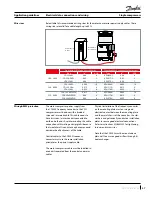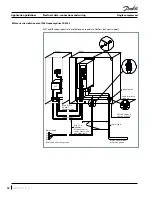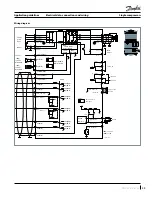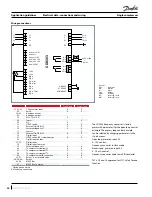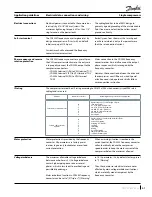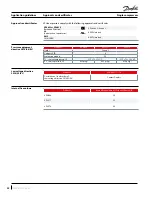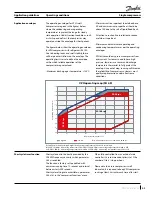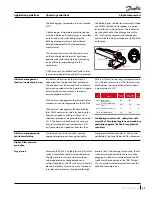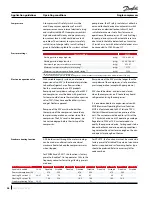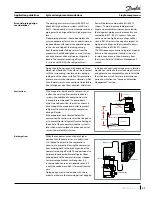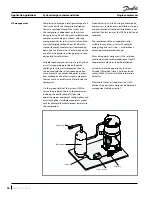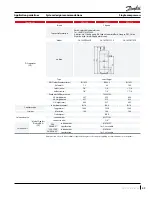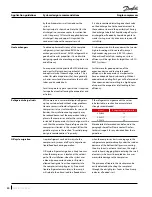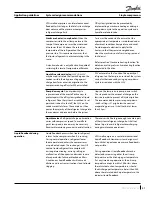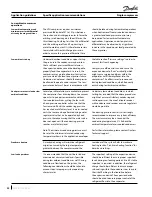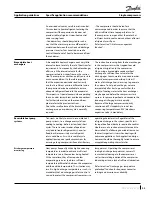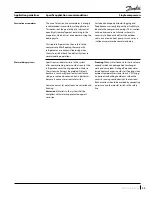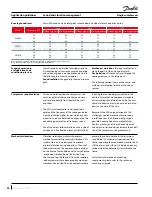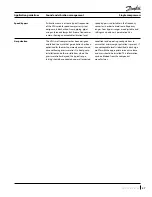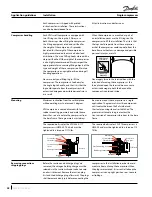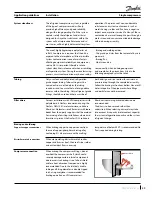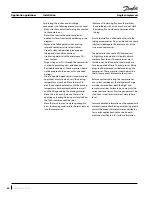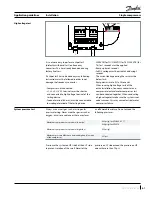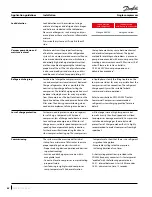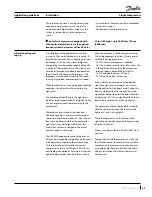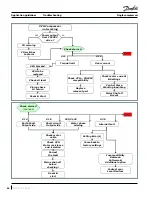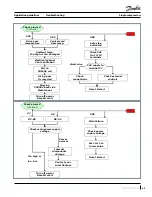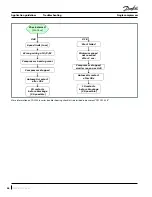
Application guidelines
51
FRCC.PC.023.A7.22
Single compressors
System design recommendations
Crankcase heater / sump heater:
When the
compressor is idle, the oil temperature in the
sump of the compressor must be maintained
at no lower than 10 K above the saturation
temperature of the refrigerant on the low-
pressure side. This requirement ensures that
the liquid refrigerant is not accumulating in the
sump.
A crankcase heater is only effective if capable of
sustaining this level of temperature difference.
Tests must be conducted to ensure that the
appropriate oil temperature is maintained under
all ambient conditions (temperature and wind).
Provide separate electrical supply for the
heaters so that they remain energized even
when the machine is out of service (eg. seasonal
shut-down).
Refer to section “Crankcase heating function” for
details and settings of crankcase heating function
integrated in the drive.
Liquid line solenoid valve
(LLSV): An LLSV
may be used to isolate the liquid charge on the
condenser side, thereby preventing against
charge transfer or excessive migration to the
compressor during off-cycles. When installed,
EXV ensures also this function. The quantity of
refrigerant on the low-pressure side of the system
can be further reduced by using a pump-down
cycle in association with the LLSV.
Pump-down cycle
: A pump-down cycle
represents one of the most effective ways to
protect against the off-cycle migration of liquid
refrigerant. Once the system has reached its set
point and is about to shut off, the LLSV on the
condenser outlet closes. The compressor then
pumps the majority of the refrigerant charge into
the condenser and receiver before the system
stops on the low pressure pump-down switch.
This step reduces the amount of charge on the
low side in order to prevent off-cycle migration.
The recommended low-pressure pump-down
switch setting is 21 psig below the nominal
evaporating pressure. It shall not be set lower
than 33 psi.
Liquid receiver
: Refrigerant charge optimization
varies with compressor speed. To avoid flash
gas at low speed, a receiver may be necessary.
Receiver dimensioning requires special attention.
The receiver shall be large enough to contain part
of the system refrigerant charge, but shall not
be too large, to avoid refrigerant overcharging
during maintenance operations.
Liquid floodback during
operation
Liquid floodback occurs when liquid refrigerant
returns to the compressor when it is running.
During normal operation, refrigerant leaves
the evaporator and enters the compressor as
a superheated vapor. The suction gas can still
contain liquid refrigerant for example with
a wrong dimensioning, a wrong setting or
malfunction of the expansion device or in case
of evaporator fan failure or blocked air filters.
A continuous liquid floodback will cause oil
dilution and, in extreme situations, lead to liquid
slugging.
VZH scroll compressors can tolerate occasional
liquid floodback. However system design must
be such that repeated and excessive floodback is
not possible.
During operations, liquid floodback may be
detected by measuring either the oil sump
temperature or the discharge gas temperature.
If at any time during operations, the oil sump
temperature drops to within 10K or less above
the saturated suction temperature, or should
the discharge gas temperature be less than 35K
above the saturated discharge temperature, this
indicates liquid floodback.
VZH scroll compressors can tolerate occasional
flooded starts as long as the total system charge
does not exceed the maximum compressor
refrigerant charge limit.
Off-cycle migration can be prevented by
implementing a crankcase heating or adding a
pump-down cycle to the operation cycle and a
liquid line solenoid valve.

